20 Ways to Find Joy in Every Day
Want to feel a little lighter, shine a little brighter and watch your mood go sky-high? That incomparable state that's one part inner peace, one part giddy delight is 100 percent attainable.
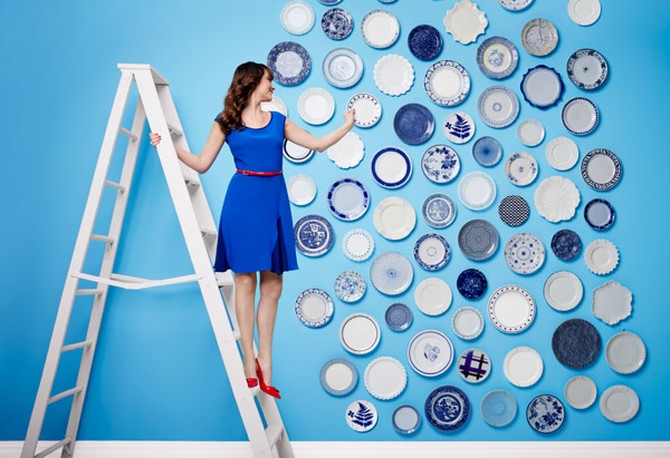
Photo: Liz Von Hoene
Collect Something
The thrill of the hunt, the glee of discovery, the joy of arranging (and rearranging): these are a few of Lisa Congdon's favorite things.
"Years ago my partner and I were walking past a garage sale in San Francisco when I spotted a piece of midcentury Norwegian enamelware—a bowl in a blue lotus pattern. It's really rare, a great find. The asking price? $1.
"The bowl was worth about $150—but it's not about the money. I loved knowing I was the only person around who understood its value. I've always loved that. When I was a girl in upstate New York, I made my grandmother take me to the dump to look for treasure; she was a collector, too. When I was told to clean my room, I would instead arrange my collections—arranging was always my favorite part. It's also what I did in my blog, A Collection a Day: Every day for a year, I arranged a collection and took a picture or sketched it. There's something so appealing about an array of like things—so orderly and pretty.
"My advice is to find something special to you and start seeking it out. It doesn't matter if it's worth money; it just needs to be something you want more than one of. And it should be hard to find, because the hunt is half the fun. I like collecting the way I like crime novels: I want to awaken my inner detective. The longer the search, the sweeter the find."
—As told to Laura Birek
"Years ago my partner and I were walking past a garage sale in San Francisco when I spotted a piece of midcentury Norwegian enamelware—a bowl in a blue lotus pattern. It's really rare, a great find. The asking price? $1.
"The bowl was worth about $150—but it's not about the money. I loved knowing I was the only person around who understood its value. I've always loved that. When I was a girl in upstate New York, I made my grandmother take me to the dump to look for treasure; she was a collector, too. When I was told to clean my room, I would instead arrange my collections—arranging was always my favorite part. It's also what I did in my blog, A Collection a Day: Every day for a year, I arranged a collection and took a picture or sketched it. There's something so appealing about an array of like things—so orderly and pretty.
"My advice is to find something special to you and start seeking it out. It doesn't matter if it's worth money; it just needs to be something you want more than one of. And it should be hard to find, because the hunt is half the fun. I like collecting the way I like crime novels: I want to awaken my inner detective. The longer the search, the sweeter the find."
—As told to Laura Birek
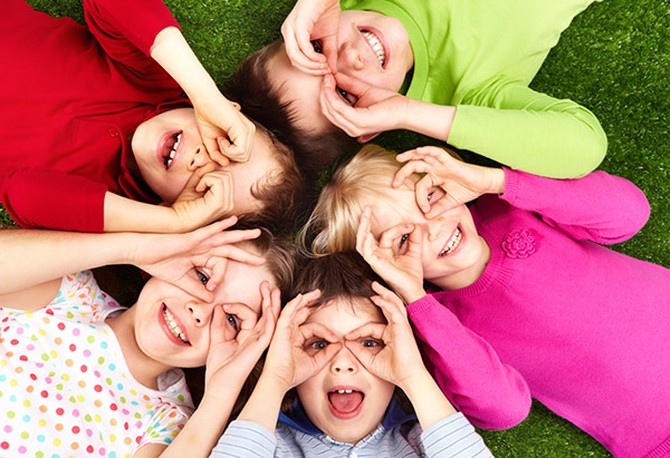
Photo: Thinkstock
Play
Natalie Rusk, of MIT Media Lab's Lifelong Kindergarten Group, has spent more than 20 years studying learning and creativity—and has found that play is more than fun and games. We asked her about the group's remarkable research.
Q: Lifelong kindergarten! That sounds like fun. What does the lab do?
Rusk: Our mission is to help children grow into creative thinkers, but we develop technologies for people of all ages. One, called Scratch, is an online environment that lets you design interactive games, animation, stories and greeting cards.
Q: What have you learned about play?
Rusk: Play teaches us to relax, explore, connect. If you're on an airplane and the pilot makes a joke in his announcement, that's a kind of play that puts people at ease. A really great yoga teacher will help you approach the poses in a spirit of delight. Play is also a great way to learn about resilience. When a child plays, she fails and revises: "My blocks fell over! I'll try again."
Q: How do we bring more play into our everyday lives?
Rusk: Start by giving yourself permission. And then do it, even if it feels silly. One way is to engage the senses: Eat blindfolded, roll down a hill, blow bubbles, make crazy mouth noises. Go to a toy store and buy the most appealing blocks or chemistry set for yourself, and then see what you can do with it. Use play to figure things out: If you're struggling to explain something, try expressing your ideas with a sketch. We've found that using a nonverbal medium helps. It may sound obvious, but hang out with kids—put them in charge of the afternoon's activities. Above all, create. Look at the stars and make up new constellations, then tell their stories. When you see something that doesn't work, brainstorm ways to fix it. The materials for play are available—you just have to change how you approach them.
—Anya Kamenetz
Q: Lifelong kindergarten! That sounds like fun. What does the lab do?
Rusk: Our mission is to help children grow into creative thinkers, but we develop technologies for people of all ages. One, called Scratch, is an online environment that lets you design interactive games, animation, stories and greeting cards.
Q: What have you learned about play?
Rusk: Play teaches us to relax, explore, connect. If you're on an airplane and the pilot makes a joke in his announcement, that's a kind of play that puts people at ease. A really great yoga teacher will help you approach the poses in a spirit of delight. Play is also a great way to learn about resilience. When a child plays, she fails and revises: "My blocks fell over! I'll try again."
Q: How do we bring more play into our everyday lives?
Rusk: Start by giving yourself permission. And then do it, even if it feels silly. One way is to engage the senses: Eat blindfolded, roll down a hill, blow bubbles, make crazy mouth noises. Go to a toy store and buy the most appealing blocks or chemistry set for yourself, and then see what you can do with it. Use play to figure things out: If you're struggling to explain something, try expressing your ideas with a sketch. We've found that using a nonverbal medium helps. It may sound obvious, but hang out with kids—put them in charge of the afternoon's activities. Above all, create. Look at the stars and make up new constellations, then tell their stories. When you see something that doesn't work, brainstorm ways to fix it. The materials for play are available—you just have to change how you approach them.
—Anya Kamenetz
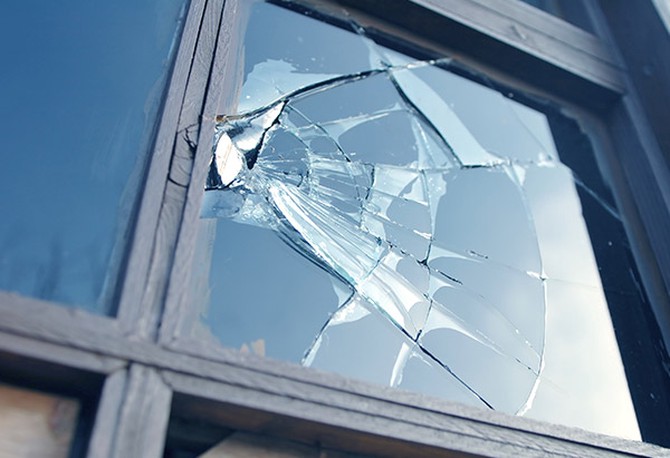
Photo: Thinkstock
Fix Your Broken Windows
How the things we neglect—or decide not to—influence our outlook.
"There's a concept in law enforcement known as the broken windows theory, which says that we take cues from our environment—so if a neighborhood shows evidence of minor lawbreaking, like graffiti or vandalism and these things go unchecked, people in that neighborhood become more likely to break bigger laws. But if you address these minor infractions, people start to behave better. It's a controversial theory of policing—but I'm convinced it's the truth when it comes to life. There are small indicators of disorder that unleash in us a feeling that things are out of control. Even if the trigger is just a stack of unsorted mail, that feeling begets other, bigger feelings—namely, guilt and defeat. Maybe your broken window is dirty laundry, a sink full of dishes, clutter on your counter. Whatever it is, it undermines your goals because it gives you a sense of chaos. The act of fixing broken windows, however, is liberating. The task takes on symbolic weight. It doesn't just feel like you're sorting the mail you've been meaning to sort—it feels like you're taking the first step toward doing everything you've been meaning to."
—Gretchen Rubin, author of The Happiness Project and Happier at Home
"There's a concept in law enforcement known as the broken windows theory, which says that we take cues from our environment—so if a neighborhood shows evidence of minor lawbreaking, like graffiti or vandalism and these things go unchecked, people in that neighborhood become more likely to break bigger laws. But if you address these minor infractions, people start to behave better. It's a controversial theory of policing—but I'm convinced it's the truth when it comes to life. There are small indicators of disorder that unleash in us a feeling that things are out of control. Even if the trigger is just a stack of unsorted mail, that feeling begets other, bigger feelings—namely, guilt and defeat. Maybe your broken window is dirty laundry, a sink full of dishes, clutter on your counter. Whatever it is, it undermines your goals because it gives you a sense of chaos. The act of fixing broken windows, however, is liberating. The task takes on symbolic weight. It doesn't just feel like you're sorting the mail you've been meaning to sort—it feels like you're taking the first step toward doing everything you've been meaning to."
—Gretchen Rubin, author of The Happiness Project and Happier at Home

Photo: Thinkstock
Be Useful
How doing for others can make a difference for you.
Psychologist Martin Seligman, PhD, once gave his students a task: Do one pleasurable activity and one philanthropic activity, then write about both. "The afterglow of the pleasurable activity," Seligman observed, "paled in comparison with the effects of the kind action." Wharton professor Adam Grant, author of Give and Take, explains why: "Feeling like you've helped someone provides a sense that you matter." Philosopher Thomas Hurka, author of The Best Things in Life, agrees: "Caring about and pursuing things other than your own happiness brings it about as a side effect." Opportunities for good deeds are plentiful. "I'm a proponent of the 'five-minute favor,'" says Grant, "like introducing two people who might enjoy each other. It's easy for you but of huge potential value to them." He also suggests setting up what's called a Reciprocity Ring: "Have, say, 12 people gather and each make a personal or professional request. Then everyone uses their knowledge and connections to try to fulfill it." The takeaway: "Often," says Grant, "the most meaningful contribution you can give isn't money. It's yourself."
—Laura Birek
Psychologist Martin Seligman, PhD, once gave his students a task: Do one pleasurable activity and one philanthropic activity, then write about both. "The afterglow of the pleasurable activity," Seligman observed, "paled in comparison with the effects of the kind action." Wharton professor Adam Grant, author of Give and Take, explains why: "Feeling like you've helped someone provides a sense that you matter." Philosopher Thomas Hurka, author of The Best Things in Life, agrees: "Caring about and pursuing things other than your own happiness brings it about as a side effect." Opportunities for good deeds are plentiful. "I'm a proponent of the 'five-minute favor,'" says Grant, "like introducing two people who might enjoy each other. It's easy for you but of huge potential value to them." He also suggests setting up what's called a Reciprocity Ring: "Have, say, 12 people gather and each make a personal or professional request. Then everyone uses their knowledge and connections to try to fulfill it." The takeaway: "Often," says Grant, "the most meaningful contribution you can give isn't money. It's yourself."
—Laura Birek
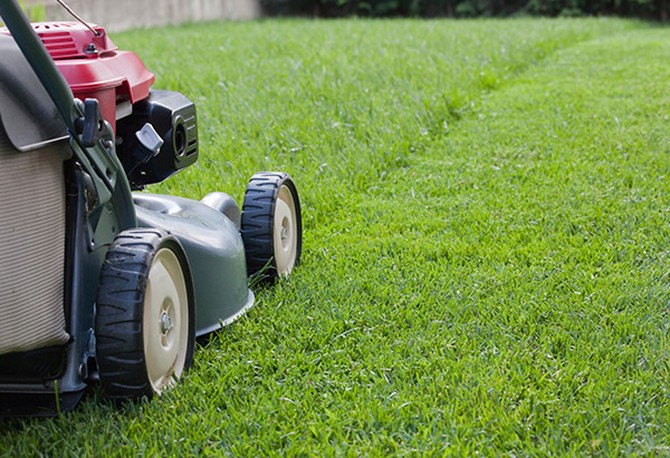
Photo: Thinkstock
Mow Your Lawn
Scientist Nick Lavidis, PhD, discovered that chemicals emitted from cut grass and leaves may reduce stress—then bottled three of them in a perfume (available at SerenaScent.com.au).

Photo: Thinkstock
Take a Cold Shower
Researchers theorize that ending your shower with a decrease in water temperature (to about 68°F), and staying under the spray for two to three minutes, may trigger neurotransmitters in the brain that produce a sense of well-being.

Photo: Thinkstock
Laugh
Get started with great lines from a few of our favorite wisecrackers, then check out their latest comedic endeavors—all of which can be counted on to bring the funny.
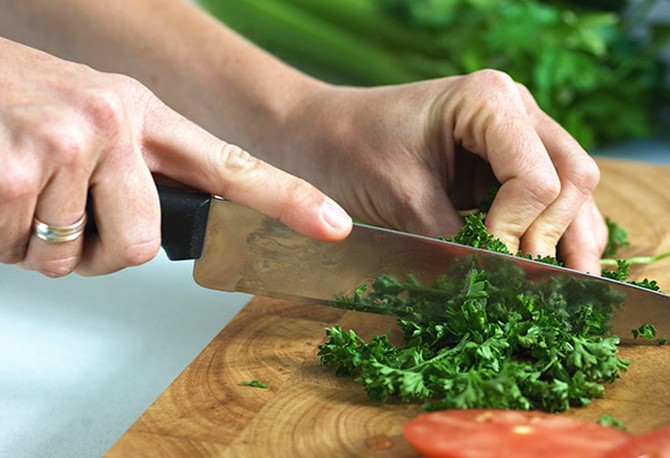
Photo: Thinkstock
Prepare
Chef Thomas Keller (The French Laundry, Per Se) on the joy of knowing you're ready for anything.
We chefs believe that the better you prepare, the better you'll be. So the concept of mise en place—French for "put in place"—is crucial to us. The term describes the organizing of tools and ingredients for the evening's menu, but it's also a kind of mental state—the knowledge that everything is ready, that all potential problems have been anticipated. A pot's handle hanging off the stove, a missing bit of garnish—these things can derail you. So you turn the handle inward. You keep the garnish at hand. It becomes ingrained, even in daily life. Say I'm going to a baseball game. I double-check that I have my tickets. I think about my shoes: They should be comfortable, and not my nicest pair. (What if I spill beer on them?) I think about the weather. What if it changes? It's the same mind-set I have in the kitchen: How can I make things run smoothly? Thinking this way makes you more efficient, more relaxed—and never less than ready for what lies ahead.
We chefs believe that the better you prepare, the better you'll be. So the concept of mise en place—French for "put in place"—is crucial to us. The term describes the organizing of tools and ingredients for the evening's menu, but it's also a kind of mental state—the knowledge that everything is ready, that all potential problems have been anticipated. A pot's handle hanging off the stove, a missing bit of garnish—these things can derail you. So you turn the handle inward. You keep the garnish at hand. It becomes ingrained, even in daily life. Say I'm going to a baseball game. I double-check that I have my tickets. I think about my shoes: They should be comfortable, and not my nicest pair. (What if I spill beer on them?) I think about the weather. What if it changes? It's the same mind-set I have in the kitchen: How can I make things run smoothly? Thinking this way makes you more efficient, more relaxed—and never less than ready for what lies ahead.

Photo: Thinkstock
Appreciate the Little Stuff
Neil Pasricha, author of The Book of Awesome, celebrates the perks of everyday life.
Most of us experience a few spectacularly high highs in life—your grandma's tearful expression at your college graduation, the joke your dad cracks as he walks you down the aisle—but while those moments are beautiful, they make up about .01 percent of our lives. So our job is to find the not-so-spectacular highs that are as delicious as they are mundane. Here are my favorites:
When the person scratching your back finds that one really itchy spot.
Just a little higher. A little lower. To the right—aah.
Letting go of the gas pump at just the right moment.
Tap that handle, curl the dial up to 20 bucks even, high-five your fellow patrons.
Sleeping with one leg under the covers and one leg out.
(A.k.a. the Toe Vent, or These Little Piggies Went to the Air-Conditioned Mall.
Wearing underwear straight from the dryer.
Like jumping on a horse that's been in the sun. A vacation for your butt.
When your windshield wipers sync with the song you're listening to.
Put on your turn signal for some hi-hat.
Fixing electronics by smacking them.
Here's why the Fonz hit the jukebox on Happy Days: It works!
Finally peeing after holding it forever.
Oh, sweet release.
Most of us experience a few spectacularly high highs in life—your grandma's tearful expression at your college graduation, the joke your dad cracks as he walks you down the aisle—but while those moments are beautiful, they make up about .01 percent of our lives. So our job is to find the not-so-spectacular highs that are as delicious as they are mundane. Here are my favorites:
When the person scratching your back finds that one really itchy spot.
Just a little higher. A little lower. To the right—aah.
Letting go of the gas pump at just the right moment.
Tap that handle, curl the dial up to 20 bucks even, high-five your fellow patrons.
Sleeping with one leg under the covers and one leg out.
(A.k.a. the Toe Vent, or These Little Piggies Went to the Air-Conditioned Mall.
Wearing underwear straight from the dryer.
Like jumping on a horse that's been in the sun. A vacation for your butt.
When your windshield wipers sync with the song you're listening to.
Put on your turn signal for some hi-hat.
Fixing electronics by smacking them.
Here's why the Fonz hit the jukebox on Happy Days: It works!
Finally peeing after holding it forever.
Oh, sweet release.
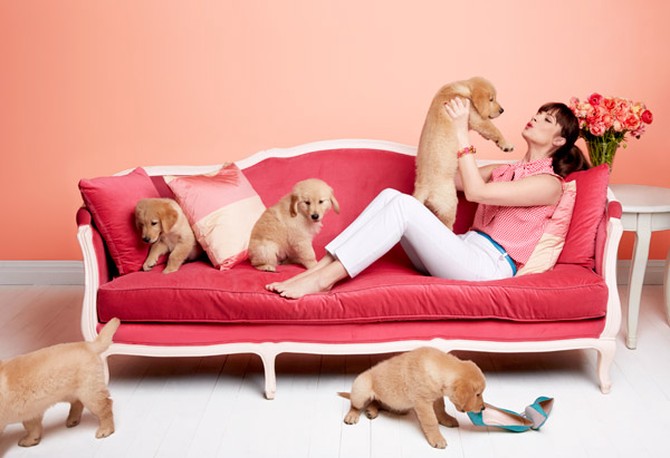
Photo: Liz Von Hoene
Pet...A Pet—Any Pet!
It's fun, it's good for you and it's easy to do. But don't take our word for it.
Hi there. How's it going? Well, guess what—it could be going even better! Did you know that petting us and talking to us and feeding us treats (by the way, do you have any treats?) is really good for you? For your body, your mind, your soul—all of it! It's scientific fact. Research has found that pet owners—though we prefer the term human roommates—often have greater self-esteem, are more physically fit and tend to be less preoccupied and anxious than their petless counterparts. But if you happen to be petless, no worries: Just hanging out with us will also do the trick. We're the adorable, slobbering equivalent of meditating or eating an apple a day. (Actually, do you have an apple? Because we'd also take an apple.) You want to know the best part? We're everywhere! Maybe you know a pet owner, or maybe you leave your house occasionally—because that's really all it takes to come across one of us inspecting a fire hydrant or snoozing in the grass or grazing in a pasture on a rural road. (Plus there's always petting zoos, or, as we call them, green pellet buffets.) And when you happen upon us, we hope you'll stop and scratch our chins for a few. In part because we really enjoy it, especially if treats are involved (seriously, do you have any?), but also because it'll do you more good than you realize. So don't be a stranger! We won't bite.
Love,
Domestic Animals the World Over
Hi there. How's it going? Well, guess what—it could be going even better! Did you know that petting us and talking to us and feeding us treats (by the way, do you have any treats?) is really good for you? For your body, your mind, your soul—all of it! It's scientific fact. Research has found that pet owners—though we prefer the term human roommates—often have greater self-esteem, are more physically fit and tend to be less preoccupied and anxious than their petless counterparts. But if you happen to be petless, no worries: Just hanging out with us will also do the trick. We're the adorable, slobbering equivalent of meditating or eating an apple a day. (Actually, do you have an apple? Because we'd also take an apple.) You want to know the best part? We're everywhere! Maybe you know a pet owner, or maybe you leave your house occasionally—because that's really all it takes to come across one of us inspecting a fire hydrant or snoozing in the grass or grazing in a pasture on a rural road. (Plus there's always petting zoos, or, as we call them, green pellet buffets.) And when you happen upon us, we hope you'll stop and scratch our chins for a few. In part because we really enjoy it, especially if treats are involved (seriously, do you have any?), but also because it'll do you more good than you realize. So don't be a stranger! We won't bite.
Love,
Domestic Animals the World Over
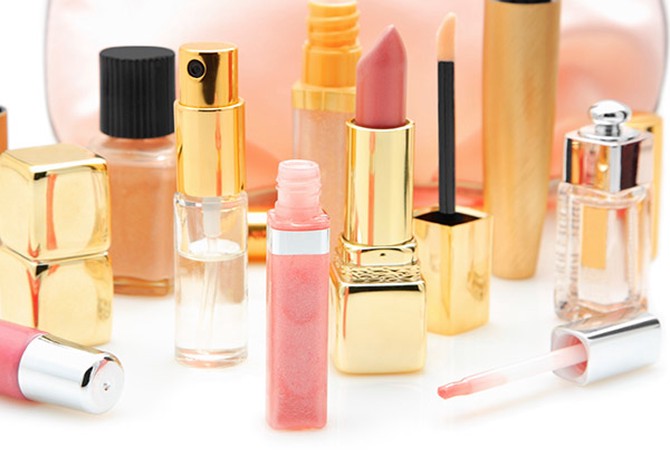
Photo: Thinkstock
Stop And Smell The Rose Lip Balm
Research suggests that floral scents increase positive emotions—which is no surprise to Mandy Aftel, owner of Aftelier Perfumes, who offers up odes to five beloved blooms:
Roses
"They can be spicy, vibrant and heady, or soft and sweet. Smelling a rose is grounding—when I crush a few petals in my hand, calm flows through my body."
Magnolias
"These have a fresh, clean scent that's a bit fruity and tart, with a crisp finish that's not as sweet or cloying as other flowers."
Jasmine
"It has a sweetness but also, because of a compound called indole—this is going to sound strange—a faintly rotten quality. The combination is sexy and intense."
Gardenias
"Gardenias possess a heavy, rich undertone. Picture the texture of cream—convert that to a scent and you'd land close to gardenias."
Lavender
"It smells bright, green and tart, which makes it invigorating. I find that it perks me up and eases stress and tension."
Add flower power to your day:
1. Rose lemonade ($10 for four; DrinkFentimans.com)
2. J. Herbin lavender-scented ink ($15; Goldspot.com)
3. Crème de Rose Lip Balm ($27; Dior.com)
4. Magnolia hand cream ($5; WorldMarket.com)
5. Jasmin & Bergamote Shower Gel ($18; USA.LOccitane.com)
6. Gardenia soap ($8; SoapandPaperFactory.com)
Roses
"They can be spicy, vibrant and heady, or soft and sweet. Smelling a rose is grounding—when I crush a few petals in my hand, calm flows through my body."
Magnolias
"These have a fresh, clean scent that's a bit fruity and tart, with a crisp finish that's not as sweet or cloying as other flowers."
Jasmine
"It has a sweetness but also, because of a compound called indole—this is going to sound strange—a faintly rotten quality. The combination is sexy and intense."
Gardenias
"Gardenias possess a heavy, rich undertone. Picture the texture of cream—convert that to a scent and you'd land close to gardenias."
Lavender
"It smells bright, green and tart, which makes it invigorating. I find that it perks me up and eases stress and tension."
Add flower power to your day:
1. Rose lemonade ($10 for four; DrinkFentimans.com)
2. J. Herbin lavender-scented ink ($15; Goldspot.com)
3. Crème de Rose Lip Balm ($27; Dior.com)
4. Magnolia hand cream ($5; WorldMarket.com)
5. Jasmin & Bergamote Shower Gel ($18; USA.LOccitane.com)
6. Gardenia soap ($8; SoapandPaperFactory.com)

Photo: Thinkstock
Sleep on the Left Side of the Bed
A British survey revealed that respondents who slept on the left side of the bed—i.e., when you're in it—were more likely to have a cheerful disposition.
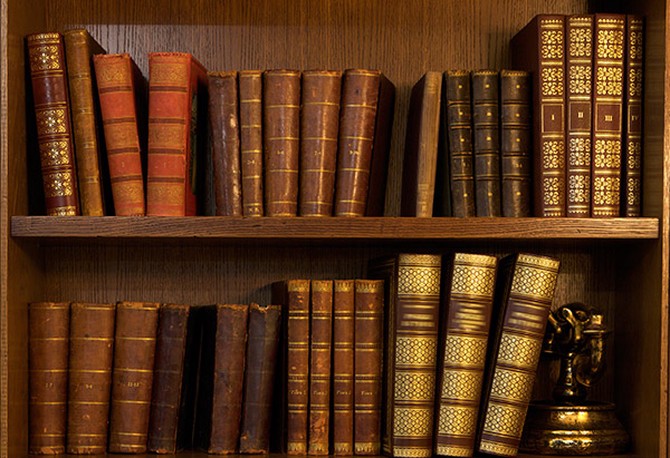
Photo: Thinkstock
Happy Up Your Home
Two space-sprucing specialists suggest ways to make your place shine.
Eliminate eyesores.
Amy Azzarito, author of Past & Present, replaced drab closet handles with a pair shaped like Nepalese goddesses, and improved an ugly light-fixture cord by stringing it with beads.
Use your unused spaces.
When Abbey Hendrickson (author of You Are Awesome: 21 Crafts to Make You Happy) bought her home, she was stumped by a tiny room with a woodstove. But installing a bench and books turned it into "the library."
Delight all your senses.
Design isn't solely visual. Consider the feel of your rug, the texture of your throw pillows, the logistics of making a room quieter. And don't forget scent—Azzarito burns a candle that smells like a campfire.
Mind the details.
Small touches can transform a space—like a vase of flowers, beautiful pens on your desk, or an artful display of your jewelry (Azzarito hangs hers on the wall). A rule of thumb? "Buy only things you want around forever," says Hendrickson. "Buy only what you love."
—Robin Romm
Eliminate eyesores.
Amy Azzarito, author of Past & Present, replaced drab closet handles with a pair shaped like Nepalese goddesses, and improved an ugly light-fixture cord by stringing it with beads.
Use your unused spaces.
When Abbey Hendrickson (author of You Are Awesome: 21 Crafts to Make You Happy) bought her home, she was stumped by a tiny room with a woodstove. But installing a bench and books turned it into "the library."
Delight all your senses.
Design isn't solely visual. Consider the feel of your rug, the texture of your throw pillows, the logistics of making a room quieter. And don't forget scent—Azzarito burns a candle that smells like a campfire.
Mind the details.
Small touches can transform a space—like a vase of flowers, beautiful pens on your desk, or an artful display of your jewelry (Azzarito hangs hers on the wall). A rule of thumb? "Buy only things you want around forever," says Hendrickson. "Buy only what you love."
—Robin Romm
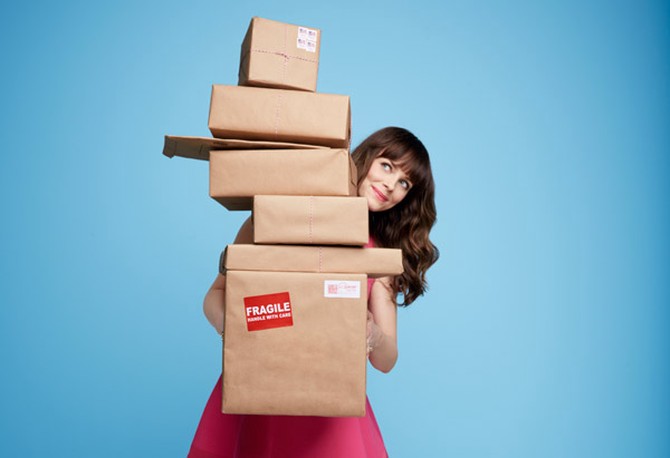
Photo: Liz Von Hoene
Be Surprised
An unexpected delight is the best kind of all. Here are three ways to spring something great on yourself. Ta-da!
Join the club.
Subscription clubs let you give a gift to yourself each month: Nicely Noted offers an assortment of letterpress cards and cool stamps to send them with ($18 per month; NicelyNoted.com). After asking about your musical tastes, Merchbox ships a curated array of CDs by up-and-coming acts, plus other goodies ($10 per month; Merch-box.com). The Indiespensable program from Powell's Books of Portland, Oregon, sends signed editions of new novels and treats that echo the book's theme ($39.95 every six weeks; Powells.com/Indiespensable). Ready for dessert? Standard Cocoa has you covered with bars by artisanal chocolatiers (From $20 per month; StandardCocoa.com).
Place yourself in the hands of a good chef.
A tasting menu is a multicourse meal prepared (and chosen) by the kitchen. The three at Chicago's Topolobampo explore Mexican cuisine, and—spoiler alert—the "classics" menu features stellar mole negro (From $95; RickBayless.com). Orchids at Palm Court, in Cincinnati, is a boon for lovers of inventive fare—a past menu included a balloon made of mozzarella ($65; OrchidsatPalmCourt.com). New York's Brushstroke, a collaboration between chef David Bouley and Japan's Tsuji Culinary Institute, serves exquisite sashimi ($85; DavidBouley.com). And The Restaurant at Meadowood, in St. Helena, California, earned three Michelin stars by making each dish—pastry pillows speckled with flowers, côte de bœuf daubed with escargots—as stunning to behold as it is to eat ($225; TheRestaurantatMeadowood.com).
Book a trip to who knows where.
Hit up Magical Mystery Tours for a surprise vacation: After inquiring about your budget, dates and preferences, an agent will craft a custom trip, giving you the itinerary within a week of your departure. Sure, you can scope the schedule in advance, but the company recommends waiting until you're at the airport or train station. Bon voyage!
—Katie Arnold-Ratliff
Join the club.
Subscription clubs let you give a gift to yourself each month: Nicely Noted offers an assortment of letterpress cards and cool stamps to send them with ($18 per month; NicelyNoted.com). After asking about your musical tastes, Merchbox ships a curated array of CDs by up-and-coming acts, plus other goodies ($10 per month; Merch-box.com). The Indiespensable program from Powell's Books of Portland, Oregon, sends signed editions of new novels and treats that echo the book's theme ($39.95 every six weeks; Powells.com/Indiespensable). Ready for dessert? Standard Cocoa has you covered with bars by artisanal chocolatiers (From $20 per month; StandardCocoa.com).
Place yourself in the hands of a good chef.
A tasting menu is a multicourse meal prepared (and chosen) by the kitchen. The three at Chicago's Topolobampo explore Mexican cuisine, and—spoiler alert—the "classics" menu features stellar mole negro (From $95; RickBayless.com). Orchids at Palm Court, in Cincinnati, is a boon for lovers of inventive fare—a past menu included a balloon made of mozzarella ($65; OrchidsatPalmCourt.com). New York's Brushstroke, a collaboration between chef David Bouley and Japan's Tsuji Culinary Institute, serves exquisite sashimi ($85; DavidBouley.com). And The Restaurant at Meadowood, in St. Helena, California, earned three Michelin stars by making each dish—pastry pillows speckled with flowers, côte de bœuf daubed with escargots—as stunning to behold as it is to eat ($225; TheRestaurantatMeadowood.com).
Book a trip to who knows where.
Hit up Magical Mystery Tours for a surprise vacation: After inquiring about your budget, dates and preferences, an agent will craft a custom trip, giving you the itinerary within a week of your departure. Sure, you can scope the schedule in advance, but the company recommends waiting until you're at the airport or train station. Bon voyage!
—Katie Arnold-Ratliff
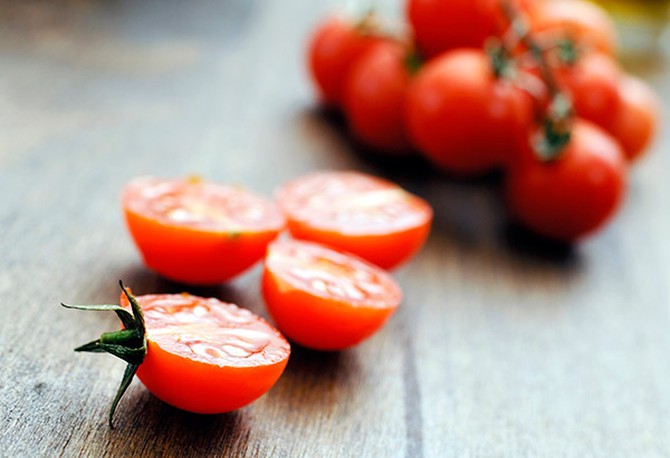
Photo: Thinkstock
Do It Yourself
Knowing how to fix, make, grow—and weld—isn't just empowering, says Jessica Bruder. It's transcendent.
I am a lover of power tools. In my gas station coveralls, I've wielded welding torches, hoisted chain saws and whiled away afternoons with a belt sander. I've mastered the plasma cutter, the nail gun, the grinder. But I believe the best tools are the ones that come standard at birth: our two hands.
Working with your hands is a big part of humanness. A day in the woodshop or craft room or garden reconnects you with your body—which is a nice break from staring at screens. Plus, it's deeply satisfying to experience an activity directly instead of hiring someone to do it for you. Calling a plumber will not give you a sense of power and autonomy. Stopping your own leaky pipe from leaking will.
Lately, I've been using my hands to fix cars and grow tomatoes, unscrewing lug nuts and screwing together planter boxes, jacking up a chassis and hauling bags of dirt to the roof of my fourth-floor walk-up. I'm still a little shaky on the auto shop stuff, but I'm excited about the tomatoes, even though the hands in question don't have green thumbs (I once killed a cactus). No matter the results, though, the experience will be meaningful.
Our culture rewards expertise and efficiency. My tomatoes will reflect neither. With the cost of growing taken into account, they'll be more expensive than the ones at the supermarket. They may be less aesthetically appealing, too. But they will be mine, born of my hard work and gentle care. And that achievement is something nobody else can create but me.
Jessica Bruder writes for The New York Times' You're the Boss blog and is the author of Burning Book: A Visual History of Burning Man.
I am a lover of power tools. In my gas station coveralls, I've wielded welding torches, hoisted chain saws and whiled away afternoons with a belt sander. I've mastered the plasma cutter, the nail gun, the grinder. But I believe the best tools are the ones that come standard at birth: our two hands.
Working with your hands is a big part of humanness. A day in the woodshop or craft room or garden reconnects you with your body—which is a nice break from staring at screens. Plus, it's deeply satisfying to experience an activity directly instead of hiring someone to do it for you. Calling a plumber will not give you a sense of power and autonomy. Stopping your own leaky pipe from leaking will.
Lately, I've been using my hands to fix cars and grow tomatoes, unscrewing lug nuts and screwing together planter boxes, jacking up a chassis and hauling bags of dirt to the roof of my fourth-floor walk-up. I'm still a little shaky on the auto shop stuff, but I'm excited about the tomatoes, even though the hands in question don't have green thumbs (I once killed a cactus). No matter the results, though, the experience will be meaningful.
Our culture rewards expertise and efficiency. My tomatoes will reflect neither. With the cost of growing taken into account, they'll be more expensive than the ones at the supermarket. They may be less aesthetically appealing, too. But they will be mine, born of my hard work and gentle care. And that achievement is something nobody else can create but me.
Jessica Bruder writes for The New York Times' You're the Boss blog and is the author of Burning Book: A Visual History of Burning Man.
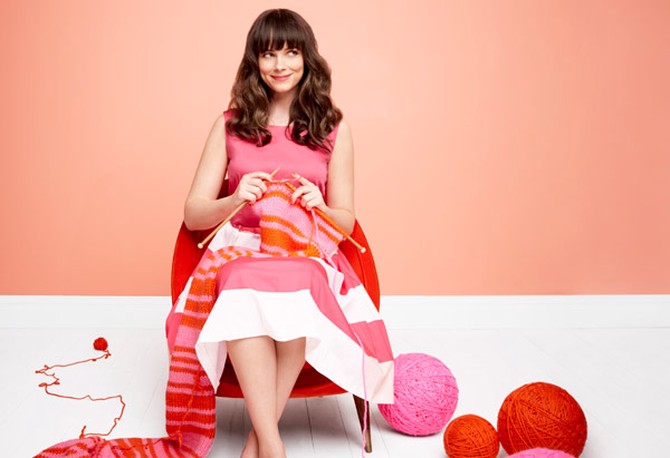
Photo: Liz Von Hoene
Find Your Flow
Get in the zone, lose yourself in the moment—and tap into a blissful brand of total engagement.
The secret to happiness might lie in knitting a scarf, according to psychologist Mihaly Csikszentmihalyi, PhD, whose research has shown that immersing yourself in an activity (especially one you find pleasurable) can trigger a state called flow. "The more flow you bring into your life," Csikszentmihalyi says, "the happier you'll be." Focusing intently in this way is thought to increase levels of the neurochemical dopamine, which kicks up your focus another notch, creating a feedback loop of heightened engagement and, thus, deeper rewards. Your quickest route to flow? When you're skilled at something but haven't yet mastered it. But flow isn't one-size-fits-all, and even distractions aren't deal breakers—if you thrive on noise, for example, you can still feel flow while a car horn honks outside your window.
—Nicole Frehsée
Focus Group
A trio of fluent flow-ers talk about tuning out everything but the task at hand.
"You're making split-second decisions, not knowing why you're waiting for another bid, why you think someone's about to change their mind, but you feel the room and tap into your intuition."
—Tobias Meyer, principal auctioneer, Sotheby's
"When things compete for my attention—the announcers, coaches, fans—I create my own environment. I go into my own world, listening to music, singing, making jokes to myself."
—Kelly Clark, snowboarder, two-time Olympic medalist
"I think, 'What's the most genuine performance you can give today?' Forget the 'best'—every night can't be fireworks. I'd rather be real. The most successful moments happen when the music and the people move you."
—Dessa, rapper and writer
The secret to happiness might lie in knitting a scarf, according to psychologist Mihaly Csikszentmihalyi, PhD, whose research has shown that immersing yourself in an activity (especially one you find pleasurable) can trigger a state called flow. "The more flow you bring into your life," Csikszentmihalyi says, "the happier you'll be." Focusing intently in this way is thought to increase levels of the neurochemical dopamine, which kicks up your focus another notch, creating a feedback loop of heightened engagement and, thus, deeper rewards. Your quickest route to flow? When you're skilled at something but haven't yet mastered it. But flow isn't one-size-fits-all, and even distractions aren't deal breakers—if you thrive on noise, for example, you can still feel flow while a car horn honks outside your window.
—Nicole Frehsée
Focus Group
A trio of fluent flow-ers talk about tuning out everything but the task at hand.
"You're making split-second decisions, not knowing why you're waiting for another bid, why you think someone's about to change their mind, but you feel the room and tap into your intuition."
—Tobias Meyer, principal auctioneer, Sotheby's
"When things compete for my attention—the announcers, coaches, fans—I create my own environment. I go into my own world, listening to music, singing, making jokes to myself."
—Kelly Clark, snowboarder, two-time Olympic medalist
"I think, 'What's the most genuine performance you can give today?' Forget the 'best'—every night can't be fireworks. I'd rather be real. The most successful moments happen when the music and the people move you."
—Dessa, rapper and writer
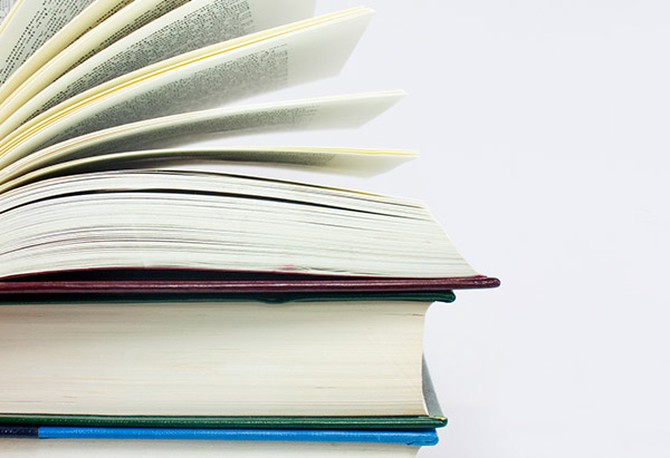
Photo: Thinkstock
Dig Into Some Mental Comfort Food
Next time you're jonesing for some easy entertainment, turn to this smorgasbord of delight-inducing children's novels, unfailingly uplifting films and stimulating electronic games. Yum.
Read...
"Zilpha Keatley Snyder's The Changeling, about two girls and their imaginary world, evokes the glorious amount of time kids spend in their heads."
—Daniel Handler (Lemony Snicket), author, A Series of Unfortunate Events
"Understood Betsy, by Dorothy Canfield Fisher, is about a girl who must leave the city to live on a farm, where she experiences all sorts of gentle adventures."
—Ann M. Martin, author, The Baby-Sitters Club series
"Ben and Me is the 'memoir' of a mouse who helped Ben Franklin achieve success. I'm a big fan."
—Katherine Paterson, author, Bridge to Terabithia, Giving Thanks
Watch...
"Funny Face (1957) is Audrey Hepburn at her loveliest, singing in Paris. Then there's Pitch Perfect (2012), about a group of misfits who form an all-girls a cappella group. Singin' in the Rain (1952) is a delight: the triumph of good guys over bad guys, with dancing! Jerry Maguire (1996) is a perfect mix of comedy and emotion; The Jerk (1979) is a hilarious way to spend an evening; and Sleepless in Seattle (1993) and You've Got Mail (1998) are what I'd show a Martian who came to Earth and asked, 'So what's this "falling in love" thing all about?'"
—Lindsay Doran, film executive, Nanny McPhee, This Is Spinal Tap
Play...
"In the calming Zen Bound 2 (iOS, Android, Mac, PC), you'll encounter intricate wooden sculptures to spin and admire. Contre Jour (iOS, Android, Windows Phone and on the Web) lets you guide a cute blob through a world of light and music. In Bumpy Road (iOS, Mac, PC), you'll help two sweethearts take a romantic drive, collecting their memories as you go. And the inventor of Curiosity—What's Inside the Cube (iOS, Android) has hidden a 'life-changing secret' inside a cube made of billions of layered tiles, which you tap to remove. Thousands of players are tapping away to discover it."
—Jane McGonigal, PhD, author, Reality Is Broken: Why Games Make Us Better and How They Can Change the World
Read...
"Zilpha Keatley Snyder's The Changeling, about two girls and their imaginary world, evokes the glorious amount of time kids spend in their heads."
—Daniel Handler (Lemony Snicket), author, A Series of Unfortunate Events
"Understood Betsy, by Dorothy Canfield Fisher, is about a girl who must leave the city to live on a farm, where she experiences all sorts of gentle adventures."
—Ann M. Martin, author, The Baby-Sitters Club series
"Ben and Me is the 'memoir' of a mouse who helped Ben Franklin achieve success. I'm a big fan."
—Katherine Paterson, author, Bridge to Terabithia, Giving Thanks
Watch...
"Funny Face (1957) is Audrey Hepburn at her loveliest, singing in Paris. Then there's Pitch Perfect (2012), about a group of misfits who form an all-girls a cappella group. Singin' in the Rain (1952) is a delight: the triumph of good guys over bad guys, with dancing! Jerry Maguire (1996) is a perfect mix of comedy and emotion; The Jerk (1979) is a hilarious way to spend an evening; and Sleepless in Seattle (1993) and You've Got Mail (1998) are what I'd show a Martian who came to Earth and asked, 'So what's this "falling in love" thing all about?'"
—Lindsay Doran, film executive, Nanny McPhee, This Is Spinal Tap
Play...
"In the calming Zen Bound 2 (iOS, Android, Mac, PC), you'll encounter intricate wooden sculptures to spin and admire. Contre Jour (iOS, Android, Windows Phone and on the Web) lets you guide a cute blob through a world of light and music. In Bumpy Road (iOS, Mac, PC), you'll help two sweethearts take a romantic drive, collecting their memories as you go. And the inventor of Curiosity—What's Inside the Cube (iOS, Android) has hidden a 'life-changing secret' inside a cube made of billions of layered tiles, which you tap to remove. Thousands of players are tapping away to discover it."
—Jane McGonigal, PhD, author, Reality Is Broken: Why Games Make Us Better and How They Can Change the World

Photo: Steven Kazlowski/NPL/Rex USA
Look at this. Repeat.
Oh, funky polar bear, you never fail to make our day. Work it!

Photo: Thinkstock
Be Curious
"When we explore the new," writes Todd Kashdan, PhD, author of Curious?, "we can become more...comfortable dealing with tension and anxiety, and more intelligent, wise and resilient." To get you started on a path of discovery, we asked people in the know to recommend ways to learn more about their fascinating fields.
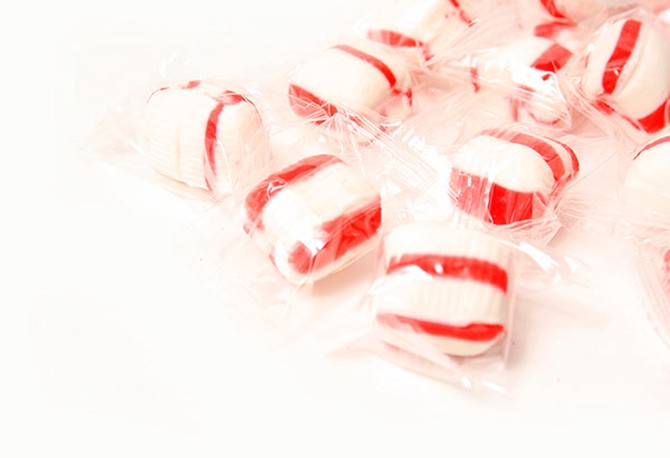
Photo: Thinkstock
Pop a Peppermint
In studies, athletes have rated their performance better after drinking peppermint-flavored water, and drivers have exhibited decreased anxiety after a shot of peppermint-scented air.
Next: 11 ways to brighten your day (or someone else's)
Next: 11 ways to brighten your day (or someone else's)
From the July 2013 issue of O, The Oprah Magazine

